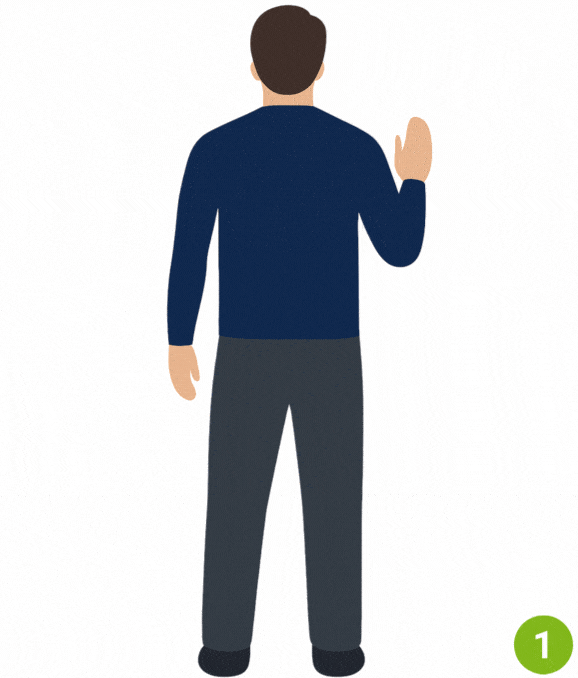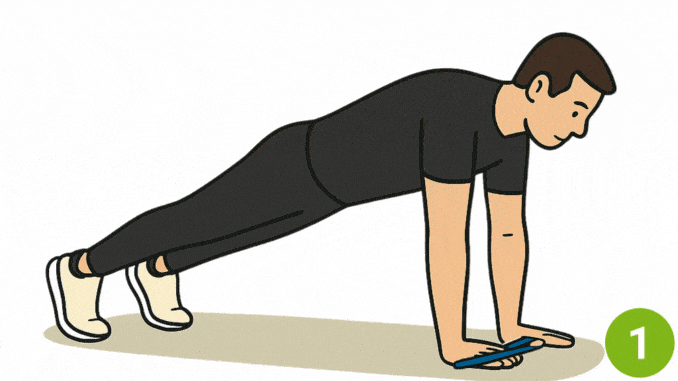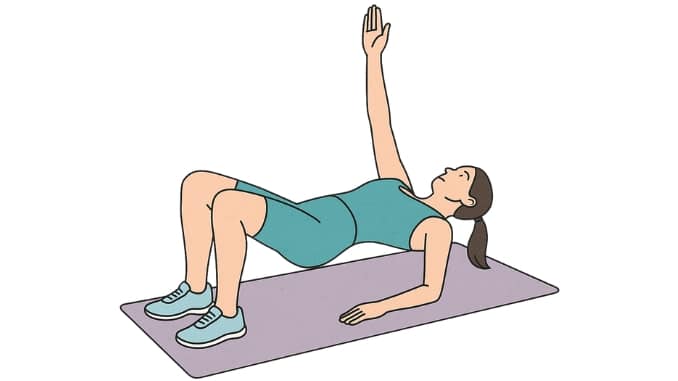Shoulder pain or poor posture affecting your workouts or daily life? Mini band exercises offer a practical solution. Whether you’re recovering from an injury or want to prevent one, mini band shoulder exercises can be a total game-changer.
These compact, travel-friendly tools offer big benefits. Using mini resistance bands helps you strengthen your rotator cuffs, activate smaller muscles, and support your shoulder joint [1] with better alignment and control.
Before we dive into your full mini band workout, let’s break down the exercises step by step.
Here’s your mini band workout for shoulder health—each move targets specific muscle groups, including the rotator cuff,[2] shoulder blades, and upper back.
1. External Rotations for Shoulder Exercise
Focus: Rotator cuffs, shoulder blades, mid back.
Tip: Keep a straight line through your upper body and avoid arching your lower back.
- Begin in an upright standing position with your feet hip-width apart, maintaining good alignment from your head to your hips and legs.
- Secure a mini band around both wrists.
- Keep your elbows bent at 90 degrees and tucked close to your torso, with your hands aligned just in front of your abdomen.
- Contract your shoulder and mid-back muscles, and open your hands wider to create resistance to the band.
- Return to the starting position and repeat the movement with 10 repetitions.
2. Arm Reach for Shoulder Exercise
Focus: Shoulder joint stability, scapular mobility
- Begin in an upright standing position with your feet hip-width apart, maintaining good alignment from your head to your hips and legs.
- Wrap a resistance band around your wrist and tuck your elbows close to your body and your hands close together.
- Contract your shoulder and mid-back muscles, and extend your arms forward while gently spreading your hands apart to create tension in the band.
- Then lift your elbows upward
Return to the starting position and repeat the movement with 10 repetitions.
3. Hands Out in Front
Focus: Front deltoids, upper back, shoulder muscles
Modify with a lighter resistance level to dial in proper form first.
- Begin in an upright standing position with your feet hip-width apart, maintaining good alignment from your head to your hips and legs.
- Wrap a resistance band around your wrist and tuck your elbows close to your body and your hands close together.
- Contract your shoulder and mid-back muscles, and reach both arms forward and slowly spread your hands apart to maintain tension in the band.
- Return to the starting position and repeat the movement with 10 repetitions.
Add These Bonus Mini Band Shoulder Exercises to Complete Your Routine
To round out your workout routine and challenge the entire body, try these additional resistance band exercises:
4. Single Arm Wall Slides
Focus: Shoulder mobility, scapular movement

- Begin in an upright standing position in front of a wall with your feet hip-width apart, maintaining good alignment from your head to your hips and legs.
- Hold a towel in one hand and place your hand on the wall.
- Engage your core muscles and slowly slide your hand upward.
- Slowly lower your hand down.
- Repeat the movement with 10 repetitions.
- Repeat the movement on the opposite side.
5. Mini Band T’s (Standing or Plank Position)
Focus: Posterior deltoids, rotator cuffs

- Begin in a straight arm plank with your arms below your shoulders.
- Wrap your hands with a resistance band.
- Contract your abdominal muscles.
- Pull one hand towards your chest while keeping your body stable.
- Lower it back to the starting position and repeat the movement on the opposite side.
- Complete 10 repetitions.
6. Mini Band Pull-Aparts
Focus: Mid-back, rear shoulders, posture

- Stand tall with your feet shoulder-width apart, holding a resistance band at chest height with both arms extended straight in front of you.
- Keep a slight bend in your knees and your core engaged.
- Begin the movement by pulling the band apart laterally, squeezing your shoulder blades together as your arms move out to your sides.
- Pause briefly when your arms are extended outward, ensuring your shoulder blades are engaged, then slowly return to the starting position.
- Maintain controlled movement and steady breath throughout. Repeat for 10–15 reps.
7. Glute Bridge with Shoulder Reach
Focus: Core, shoulder stability, glutes

- Lie on your back with your knees bent and your feet flat on the floor, relaxing your upper body.
- Place your arms at your side.
- Contract your abdominal area, then push from your heels to lift your hips and extend one arm upward.
- Hold this position for several deep belly breaths, in through your nose and out through your mouth.
- Relax and return to the starting position and repeat the movement on the opposite side.
Why Mini Band Shoulder Exercises Work
Mini bands engage smaller [3] stabilizing muscles, often overlooked in traditional strength training. These exercises strengthen the rotator cuffs, shoulder blades, and stabilizers that protect your shoulder joint during big lifts, overhead movements, and daily tasks.
They also help improve posture, reduce pain, and prevent injury, especially if you work at a desk or train hard in the gym.
Final Tips for Shoulder Success
Begin with a light resistance level and focus on proper form before increasing the resistance. Perform each movement slowly and with control to safely build strength and stability.
Keep your shoulders down and back to engage the correct muscles. Do this mini band workout 2–3 times per week for best results.
Whether you’re an athlete, a fitness enthusiast, or just dealing with shoulder stiffness, these resistance band exercises are a powerful way to stay mobile, strong, and pain-free.
If you are suffering from shoulder discomfort and want to get back to pain-free workouts,
Check out the 3 mini Band Wall Exercises for Shoulder Health now!
Frequently Asked Questions
What are the benefits of mini band shoulder exercises?
Mini band shoulder exercises help build strength, stability, and mobility in your shoulder joint. They’re especially great for improving posture, reducing pain, correcting muscle imbalances, and preventing injuries—especially for people who sit a lot or use their arms overhead often.
Are mini band shoulder exercises safe for shoulder pain or injuries?
Yes—when done correctly. These exercises are low-impact and use controlled resistance, making them ideal for rehab or prehab. Always start with light resistance and focus on form. If pain increases, stop and consult a professional.
How often should I do mini band shoulder workouts?
2–3 times per week is a solid start. You can use them as a warm-up before workouts or as part of a rehab routine. Consistency is key—just 10–15 minutes can make a difference.
Do I need different band strengths for different exercises?
Not always, but it helps. Lighter bands are great for activation and warm-ups, while medium or heavy bands can be used for strength-building. Use a resistance that challenges you without compromising form.


